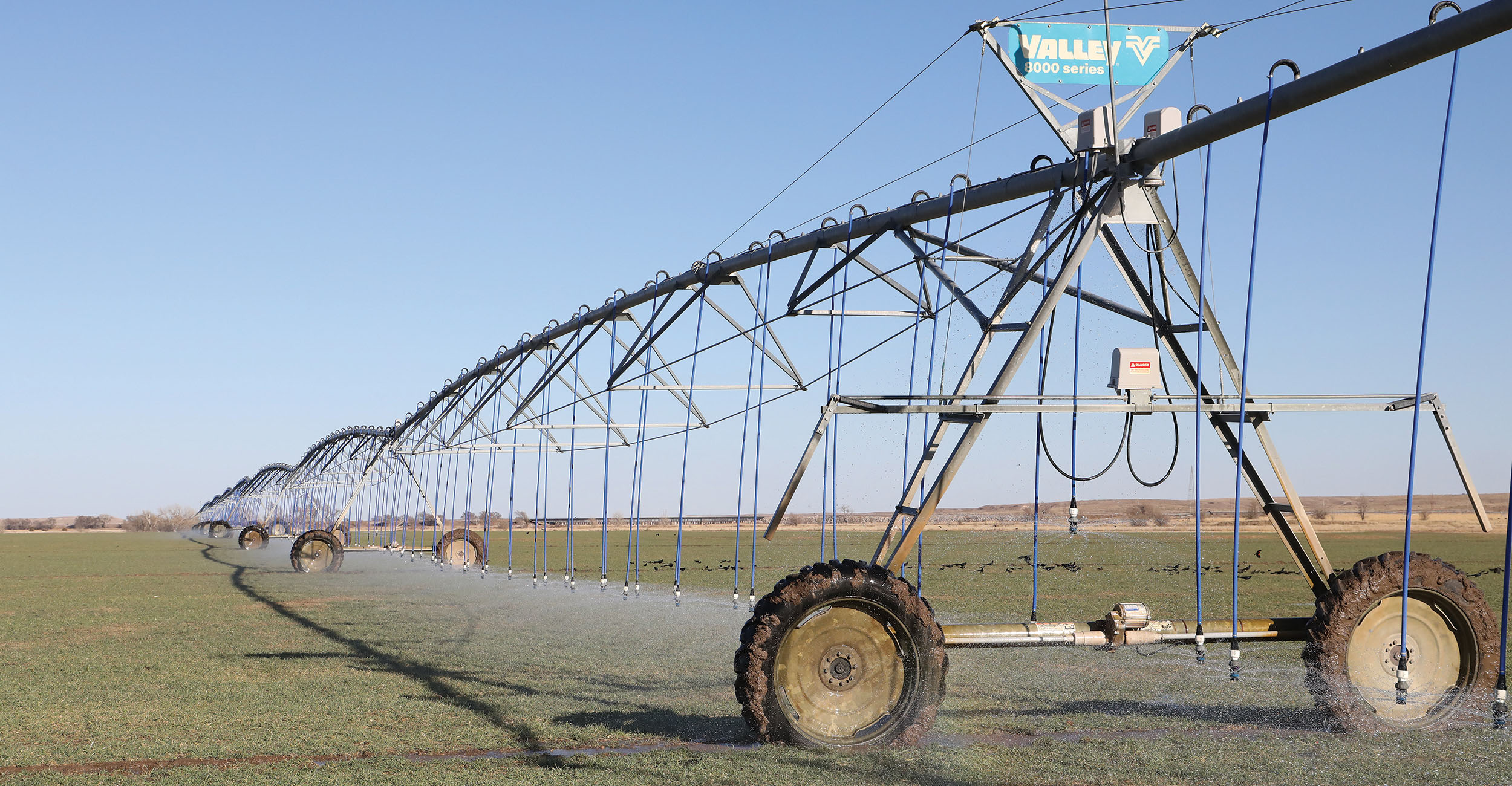
Irrigation Education
Friday, May 27, 2022
Media Contact: Jami Mattox | Agricultural Communications Services | 405-744-8061 | jami.mattox@okstate.edu
Forty percent of water in Oklahoma is used for irrigation.
To incentivize water conservation through irrigation education, Oklahoma State University faculty launched the Master Irrigator Program in 2021.
“This intensive education program elevates the knowledge of producers who irrigate so they can increase their efficiency and productivity,” said Jason Warren, professor in the OSU plant and soil sciences department.
The first Master Irrigator Program started in Texas. OSU faculty members learned of the program at a conference in 2018 and began to plan a similar program for Oklahoma, Warren said.
OSU started its first program in Goodwell in 2021. The 2022 program occurred in Altus, and in 2023, the program will return to Goodwell.
The program leaders plan to expand the program to other areas of Oklahoma, Warren said.
The program registration fee is $100. Producers attend one day a week for four weeks and can attend field days for hands-on learning in the fall.
The curriculum includes basic soil and water concepts, irrigation management, and other topics requested by an advisory panel, which includes local producers, said Sumit Sharma, assistant extension specialist in the plant and soil sciences department.
“These farmers are from places facing water scarcity,” said Saleh Taghvaeian, associate professor in the biosystems and agricultural engineering department. “We are talking about how they can better manage limited resources so they can leave this valuable resource for future generations.”
Attending the program lets producers discuss irrigation techniques they use, problems they face and management techniques they are curious about, Warren said.
Sharma said the producers come from counties around the program location, so they often face similar problems. Producers can share methods they used to overcome those problems, Sharma added. This program offers a platform to facilitate peer-to-peer exchange of knowledge, he said.
“You get a group of people together having a discussion about management considerations,” Warren said. “The beautiful thing is they are all learning from one another in trying to improve the overall irrigation in the region.”
Sharma brings in speakers from surrounding areas to provide different expertise for producers. He said he looks for speakers who are familiar with the area and can bring current information about technology, irrigation, water and soil. Producers are consulted before the program begins to ensure their specific problems will be addressed, he added.
“We get people together from different farms and different experiences,” Taghvaeian said. “We want them to get engaged in dialogue so it is not just a one-way transfer of information but a multi-way interaction where everyone learns from each other.”
Program facilitators learn from the producers, as well, Sharma said. The producers are working with land, water and irrigation systems every day, so their practical knowledge is valuable, he added.
Talking with producers also guides research at OSU, allowing researchers to find solutions that will be valuable to Oklahoma and deliver a demand-driven extension program, Taghvaeian said.
“We are enhancing producers’ knowledge of irrigation technologies,” said Kevin Wagner, director of the Oklahoma Water Resources Center. “We also are able to help them overcome the financial burden of adopting these technologies.”
Master Irrigator Program graduates are eligible for benefits to improve their irrigation systems, Wagner said. Wagner works with eight other state and federal agencies to provide funding and opportunities.
Graduates can receive up to $2,000 to purchase irrigation technology, like soil moisture sensors or irrigation schedulers, Warren said. Producers also can receive additional points on their Environmental Quality Incentives Program applications. The applications are for financial assistance provided by the U.S. Department of Agriculture Natural Resources Conservation Service.
Graduates also can request free irrigation audits, which are conducted using the OSU Mobile Irrigation Lab, Taghvaeian said.
Taghvaeian conducts two types of irrigation audits: energy and water.
Energy audits measure how much energy the irrigation system uses in daily operations.
“We go out to the farm and estimate the efficiency at which their pumps are using energy,” Taghvaeian said. “Then, we tell the farmer how much they can save if they improve the efficiency.”
Water audits measure the efficiency of the irrigation system in regard to water usage. Farmers often use this resource to tune up their irrigation systems before the irrigation season begins, Taghvaeian said.
“We have advanced sensors and instruments we attach to different pieces of the irrigation system,” Taghvaeian said. “We can find leaks in the pipeline, assess the uniformity of irrigation application, and tell if the system needs tuning or not.”
Conducting audits allows the Master Irrigator Program facilitators to connect with producers after they graduate from the program, Sharma said. Sharma also checks with producers to learn what technology they have adopted, how their irrigation season is going, and what curriculum they suggest for future programs.
Facilitators value feedback from producers, which can guide the program to fit with the interests of producers in the area, Sharma said.
“The program is going to evolve over time,” Sharma said. “As we go forward, the focus will remain on what producers are interested in.”
Thirty-seven producers graduated from the first two programs combined. The ideal number of producers per session is 25, Taghvaeian said.
As the program grows, the focus will be to continue to provide value to producers and consumers alike, Wagner said. Efficient water and energy use can save producers money, he added. Conserving water — a precious natural resource — benefits Oklahomans across the state, Wagner said.
“Any water you can save today is water you can use in the future,” Warren said. “And that future return has value.”
Story By: Haley Fair | Cowboy Journal
